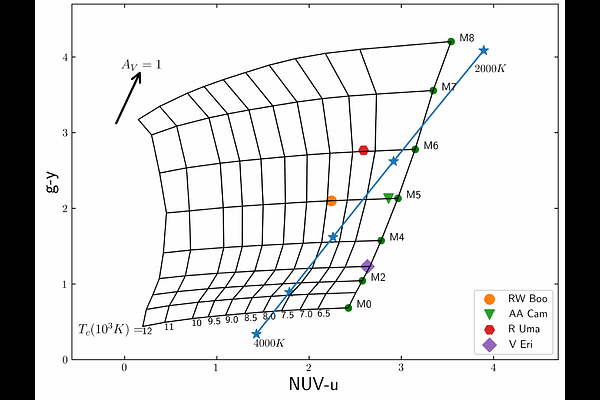Search for binarity in Asymptotic Giant Branch stars utilizing the future Chinese Space Station Telescope (CSST)

Search for binarity in Asymptotic Giant Branch stars utilizing the future Chinese Space Station Telescope (CSST)
Zhi-Meng Li, Yong Zhang
AbstractBinary systems in the Asymptotic Giant Branch (AGB) phase are widely recognized as a leading theoretical framework underpinning the observed asymmetric morphologies of planetary nebulae. However, the detection of binary companions in AGB systems is severely hampered by the overwhelming brightness and variability of the evolved primary star, which dominate the photo-metric and spectroscopic signatures. Ultraviolet (UV) excess emission has been proposed as a candidate diagnostic for the presence of binary companions in AGB systems. This paper evaluates the Chinese Space Station Telescope's (CSST) ability to detect UV excess emission in AGB stars, leveraging its unprecedented UV sensitivity and wide-field survey capabilities. We employed synthetic spectral libraries of M0-M8 type giants for primary stars and the ATLAS 9 atmospheric model grid for companion stars spanning a temperature range of 6500 K to 12000 K. By convolving these model spectra with the CSST multi-band filter system, we computed color-color diagrams (g-y versus NUV-u) to construct a diagnostic grid. This grid incorporates interstellar extinction corrections and establishes a framework for identifying AGB binary candidates through direct comparison between observed photometry and theoretical predictions. Furthermore, we discuss the physical origins of UV excess in AGB stars. This study pioneers a diagnostic framework leveraging CSST's unique multi-band UV-visible synergy to construct color-color grids for binary candidate identification, overcoming limitations of non-simultaneous multi-instrument observations.